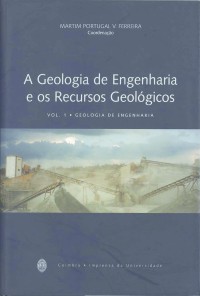Please use this identifier to cite or link to this item:
https://hdl.handle.net/10316.2/39117| Title: | Jazigos portugueses de minérios de urânio e sua génese | Other Titles: | Portuguese uranium deposits and their genesis | Authors: | Neiva, J. M. Cotelo | Keywords: | uranium;veins;epithermal mineralization;granitic solidification fluids;meteoric water;urânio;filões;mineralização epitermal;fluidos de solidificação granítica;água meteórica | Issue Date: | 2003 | Publisher: | Imprensa da Universidade de Coimbra | Journal: | http://hdl.handle.net/10316.2/2826 | Abstract: | The uranium deposits are located in Beiras and NNE of Alentejo. They are related to uranium-bearing Variscan granites that they intruded. The different types of uranium deposits are characterized. Their distributions are related to the morphology and geology of both areas. Primary mineral paragenesis of several uranium deposits were studied. Commonly epithermal uranium mineralization overlap mesothermal sulphide deposits and some of the hypothermal cassiterite and volframite deposits. Their metasomatic effects on country rocks also overlap. The granite metasomatism due to the fluids of uranium quartz and jaspe-quartz veins was studied in more detail than the others. A genetic model was defined based on the geochemistry, epithermal characteristics of uranium mineralization, location of these deposits and regional geology. Fluids released during the granite solidification mixed with significant amount of meteoric water descending through long and deep Variscan faults of Serra da Estrela. These fluids dissolved uranium from the granite uraninite (± monazite). The U-bearing fluids ascended along fractures and faults, most of them in sulphide deposits and some in cassiterite and volframite deposits, and originated epithermal pitchblende and other minerals from solutions, some of them being colloidal. When the Upper Triassic veins of basic rocks intruded, new mobilization of uranium minerals from granite and uranium mineralization took place. The other genetic hypothesis is similar to that form thermal springs. Os jazigos de urânio localizam-se nas Beiras e NNE do Alentejo, relacionados com os granitos uraníferos variscos que cortam. Caracterizados os tipos de jazigos, refere-se a sua distribuição em relação com a morfologia e geologia das duas regiões. Estudadas as paragéneses minerais primárias de variados jazigos, reconheceu-se que a epitermal uranífera se sobrepõe frequentemente à mesotermal dos jazigos de sulfuretos e, por vezes, à hipotermal dos jazigos de cassiterite e volframite. Os metassomatismos sobrepõem-se, também, nas rochas encaixantes. Foi estudado com maior pormenor o metassomatismo do granito produzido quando da génese dos filões de quartzo e de quartzo-jaspe com minérios de urânio. Com base na geoquímica, no carácter epitermal e na localização dos jazigos e na geologia regional estabeleceu-se um esquema genético a partir de mistura dos fluidos libertados quando da solidificação do granito e de água meteórica infiltrada, em apreciável quantidade, ao longo de extensas e profundas falhas variscas, hoje flancos da Serra da Estrela, que iria dissolvendo o urânio da uraninite (± monazite) deste gianito. Por ascensão dessa mistura e outras subsequentes formaram-se, em fracturas e falhas, muitas coincidentes com jazigos de sulfuretos e outras com jazigos de cassiterite e volframite, concentrações epitermais de pecheblenda e de outros minerais a partir de soluções algumas delas coloidais. Quando da intrusão de filões de rochas básicas, no Triássico Superior, terá havido nova mobilização de minerais uraníferos do granito e da mineralização uranífera. Outra hipótese genética é semelhante à das fontes termais, havendo, também, possibilidade desta. |
URI: | https://hdl.handle.net/10316.2/39117 | ISBN: | 972-8704-14-3 978-989-26-0321-6 (PDF) |
DOI: | 10.14195/978-989-26-0321-6_1 | Rights: | open access |
| Appears in Collections: | A geologia de engenharia e os recursos geológicos. Vol. I: Geologia de Engenharia |
Files in This Item:
| File | Description | Size | Format | |
|---|---|---|---|---|
| jazigos_portugueses_de_minerios_de_urancio_e_sua_genese.pdf | 10.71 MB | Adobe PDF |  |
Items in DSpace are protected by copyright, with all rights reserved, unless otherwise indicated.
